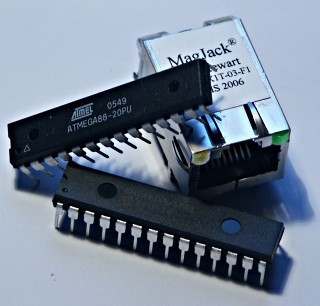
[Irongeek] has been working on changing the OS fingerprint of his Windows box. Common network tools like Nmap, P0f, Ettercap, and NetworkMiner can determine what operating system is being run by the behavior of the TCP/IP stack. By changing this behavior, you can make your system appear to be another OS. [Irongeek] started writing his own tool by checking the source of Security Cloak to find out what registry keys needed to be changed. His OSfuscate tool lets you define your own .os fingerprint file. You can pretend to be any number of different systems from IRIX to Dreamcast. Unfortunately this only works for TCP/IP. Other methods, like Satori‘s DHCP based fingerprinting, still work and need to be bypassed by other means. Yes, this is just “security through obscurity”, but it is something fun to play with.











